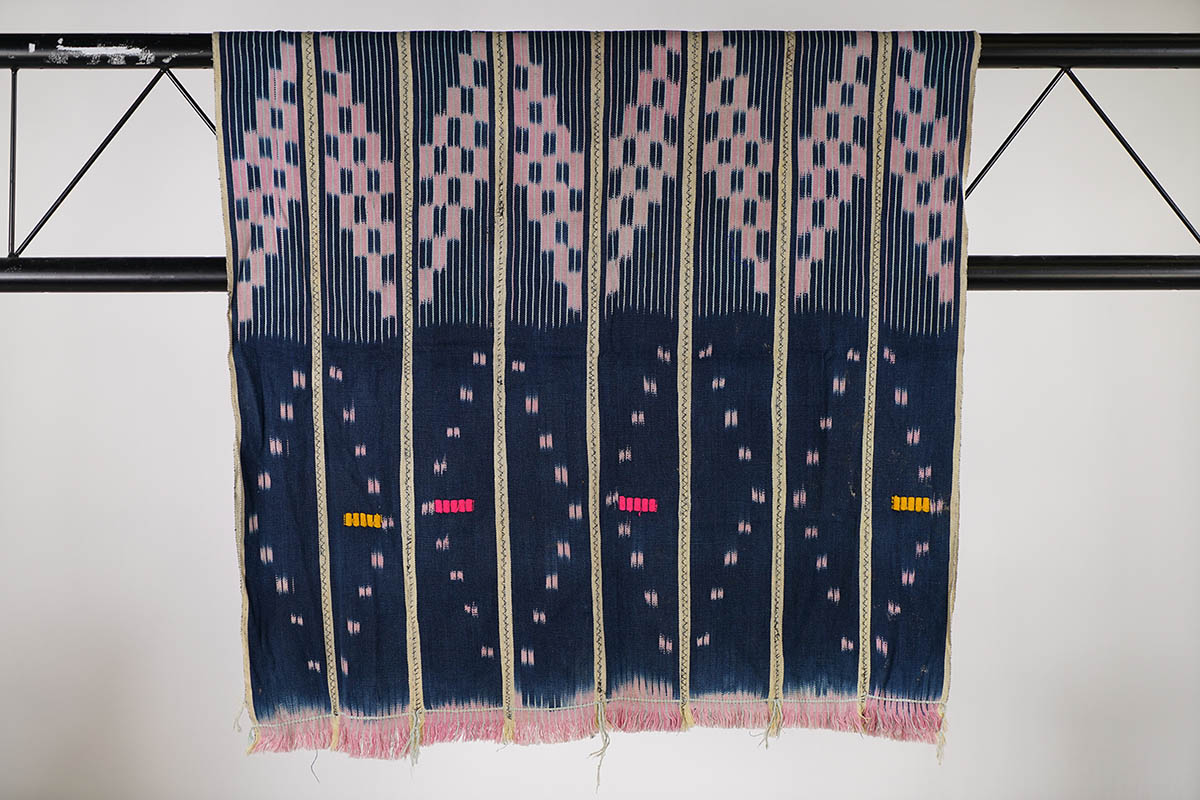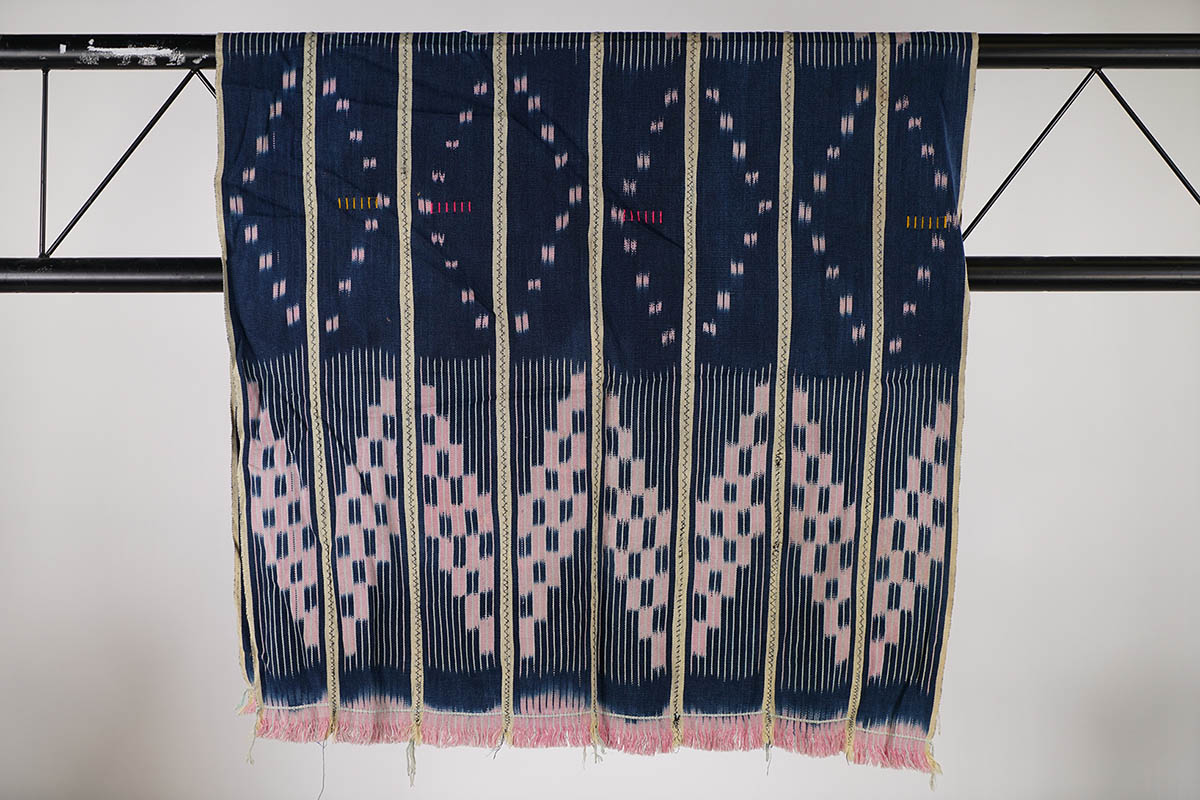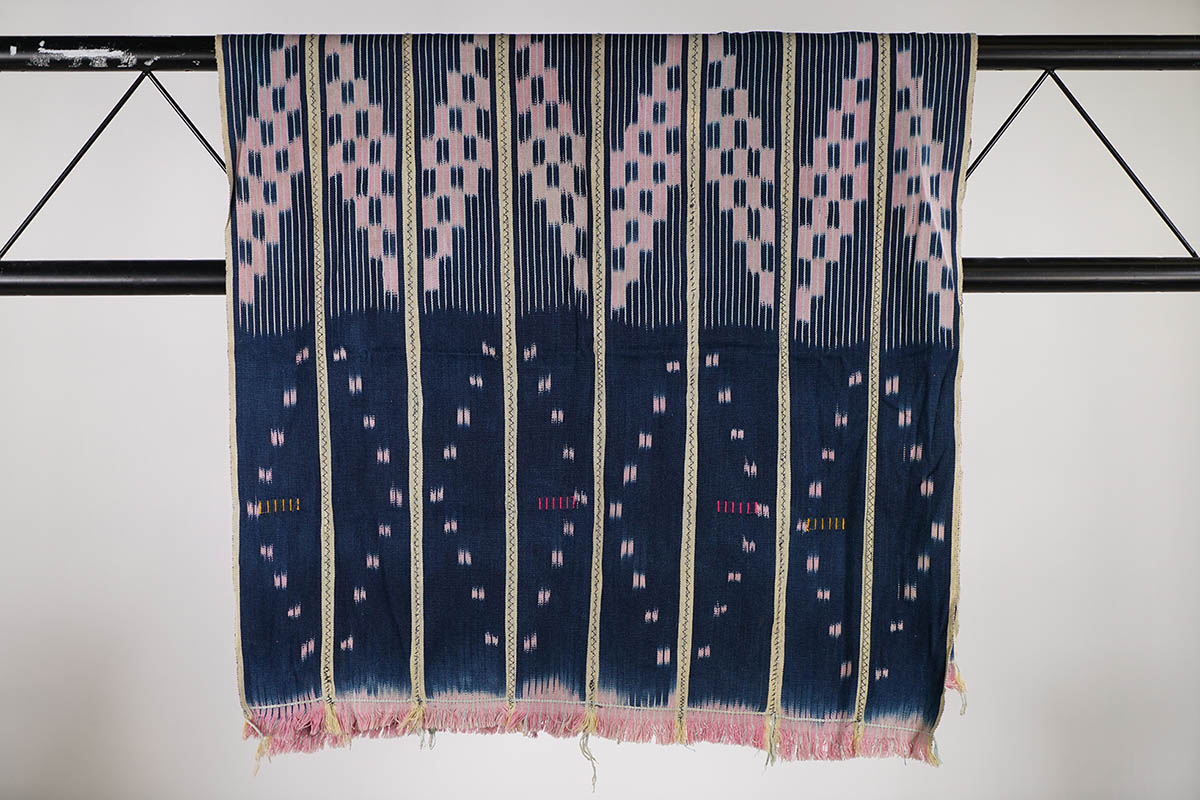This Baule textile was beautifully crafted with indigo, red, yellow and green pigments.. It measures 59 inches long by 30 inches wide. It is in good condition with minor imperfections.
Pink & Indigo Baule African Textile 59″ x 30″ – Ivory Coast
$45.50
Sold

| Type of Object | Textile |
|---|---|
| Country of Origin | Ivory Coast (Côte d’Ivoire) |
| Ethnicity | Baule (Baoule) |
| Material | 100% Cotton Dyed Thread |
| Approximate Age | Unknown |
| Height | 59" |
| Width | 30" |
| Weight | 1.5 lbs |
| Overall Condition | Good with minor imperfections. |
Tribe Information
About the Baule People
The Baule are originally part of a breakaway group of the Akan people from Ghana. In the 17th century, Queen Abla Pokou led a group on an exodus away from the main Ashanti Confederacy after a war broke out due to disagreements among the factions. Pokou realized that she and her followers may be in harms way, so she took her people and headed westward. Legend says the group came upon the Comoé River, with its dangerous waters and needed a way to safely cross. With the enemy gaining on them, Queen Pokou asked a diviner for advice. The diviner, after much thought, told her the gods required a sacrifice. Everyone began throwing their most prized possessions into the river; gold, ivory, cattle, everything they owned, hoping to appease the gods. The diviner shook his head and said that our sons are our most prized possessions. Pokou, knowing that her duty as queen was more important than that of a mother, decided then to sacrifice her only son, throwing him into the water and calling out “Ba ouli”, translated to “the child is dead”, giving them the name Baule. After the sacrifice was made, hippopotamuses came up from the river and formed a bridge allowing the queen and her people to cross.
The Baule settled in what is now known as Côte d’Ivoire or Ivory Coast. They began defeating current inhabitants of the area and quickly became the middle man post for North and South trading routes. Towns and villages sprouted up with each being independent from one another, making their own decisions with the primacy of a council of elders. Smaller communities were usually governed by a village-chief whereas large villages were ruled by a king or queen. Considered an egalitarian society, everyone is equal and has a say in the overall agenda of the people, including slaves...
Read more about the Baule here.
Additional Information
About Baule textiles
In African culture, weaving is of great importance. Textiles are worn and used in a variety of ways. Some may be woven for special ceremonies such as weddings, while others are for day to day purposes. In many cultures, textiles are handed down for generations. Cloth is so revered that it is sometimes buried with the deceased.
Textiles were also used for trading with other peoples for goods that were not indigenous to the area. From close clans, they would acquire iron and cattle. Salt, guns and gunpowder would require further travels for trading.
Several different materials can be used to create textiles, such as cotton, silk, raffia, and wool. There are also numerous variations of weaving and dying of the fabric. In the Baule culture, textile making requires the labor of both sexes. Women were to cultivate the cotton, clean and then spin it into threads. They would then make a vegetable dye (indigo) and color the yarn. Then man’s duty was to weave the thread into bands and sew the bands together in whatever patterns were asked of him.
In today’s society, the Baule use carved figurative heddle pulleys and looms to create their design patterns. In recent years, they have begun a collaboration with a nearby tribe named Dioula. Dioula dyers will color the warp threads with a technique called ikat, meaning they are tie-dyed before weaving. Baule weavers will then decorate the cloth with embroidered motifs and eventually sew them together to form larger panels.
Large indigo plantations began diminishing in the 20th century. There is however, still some small-scale harvesting in areas where indigo dyeing is treasured. Many textile makers will also use European dyes as opposed to locally cultivated ones.
You must be logged in to post a review.




Reviews
There are no reviews yet.